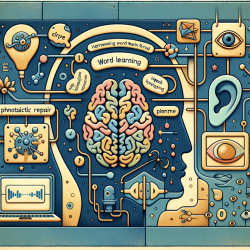Frontal lobe epilepsy (FLE) presents a unique challenge due to its complex semiology and epileptogenicity. Recent research by Arrotta et al. (2022) has shed light on the cognitive heterogeneity within FLE by identifying distinct cognitive phenotypes. This blog explores these findings and discusses how practitioners can utilize this knowledge to enhance their therapeutic approaches.
Cognitive Phenotypes in FLE
The study categorizes patients with FLE into four cognitive phenotypes based on the number of impaired cognitive domains:
- Generalized Phenotype: Impairment in at least four domains.
- Tri-Domain Phenotype: Impairment in three domains.
- Domain-Specific Phenotype: Impairment in one or two domains.
- Intact Phenotype: No impairment.
The study found that language was the most commonly affected domain, followed by attention, executive function, and processing speed. Interestingly, learning was the least impacted domain. These insights highlight the importance of personalized treatment plans that address specific cognitive deficits.
Implications for Practice
The identification of these phenotypes provides a framework for practitioners to tailor interventions more effectively. Here are some practical steps practitioners can take:
- Assess Cognitive Domains: Conduct comprehensive neuropsychological testing to identify which domains are impaired in each patient.
- Create Customized Treatment Plans: Develop interventions that target specific cognitive deficits, such as language therapy or attention training.
- Monitor Educational Impact: Since the study found a correlation between education level and phenotype, consider educational interventions to support cognitive development.
- Encourage Further Research: Stay informed about ongoing research in FLE to incorporate new findings into practice.
The Role of Education and Epileptogenic Zone
The study also noted that patients with the Generalized Phenotype had fewer years of education compared to those with the Intact Phenotype. Additionally, the extent of the epileptogenic zone varied across phenotypes. These factors underscore the need for a holistic approach that considers both clinical and demographic variables when designing treatment plans.
Conclusion
The research by Arrotta et al. (2022) enhances our understanding of cognitive phenotypes in FLE and supports the development of targeted interventions. By implementing these insights, practitioners can improve patient outcomes and contribute to advancing epilepsy care.
To read the original research paper, please follow this link: Cognitive phenotypes in frontal lobe epilepsy.










